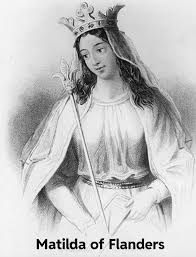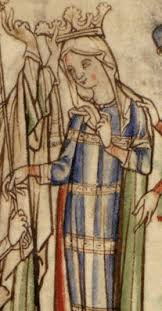The Norman Conquest of England in 1066 is one of the most transformative events in British history, heralding a shift in power, culture, and society. While much attention is given to the battles, kings, and warriors, the women who shaped and influenced this period often remain overshadowed. This article highlights the remarkable roles played by women during the Norman Conquest, exploring their influence, struggles, and legacy.
Introduction: Forgotten Figures of History
When we think of 1066, images of the Battle of Hastings and the imposing figure of William the Conqueror come to mind. But behind these events were powerful, strategic, and resilient women whose contributions deserve recognition. Let’s uncover the stories of queens, noblewomen, and everyday women who played pivotal roles during this period.
The Role of Women in Medieval Society
Women in Anglo-Saxon England
Before the Normans arrived, Anglo-Saxon women enjoyed notable rights compared to their European counterparts. They could inherit land, manage estates, and even act as leaders in religious and social contexts. These rights would be significantly altered post-Conquest.
Norman Women’s Status
Norman society was patriarchal, with women’s roles largely confined to marriage, motherhood, and religious life. However, noblewomen wielded considerable influence through strategic marriages and estate management.
Key Women of the Norman Conquest

Matilda of Flanders – William’s Queen
Matilda of Flanders, wife of William the Conqueror, was far more than a mere consort. Known for her intelligence and political acumen, Matilda played a critical role in consolidating Norman power. She governed Normandy during William’s absence and was instrumental in financing the invasion of England. Her support for monasteries and churches also helped legitimize Norman rule.
Edith of Wessex – The Last Anglo-Saxon Queen

Edith, wife of King Edward the Confessor and sister to Harold Godwinson, was a key figure in Anglo-Saxon politics. Fluent in multiple languages and deeply connected to the royal court, Edith’s loyalty to her family made her a significant player before and after the Conquest.
Emma of Normandy – A Precursor to the Conquest
Though Emma lived earlier, her legacy shaped the Norman claim to the English throne. As the wife of two kings (Æthelred the Unready and Cnut the Great) and mother of Edward the Confessor, Emma’s dynastic ties set the stage for Norman ambitions in England.
Women in the Wake of the Conquest
Displacement and Resistance
The Norman Conquest led to widespread displacement among Anglo-Saxon noblewomen. Many widows and daughters of fallen Anglo-Saxon leaders faced the loss of their lands and were forced into marriages with Norman knights. However, some resisted, such as the wife of Hereward the Wake, who actively supported her husband’s rebellion against Norman rule.
Marriage as a Political Tool
Marriage became a crucial instrument in consolidating Norman power. Anglo-Saxon women were married off to Norman lords to legitimize claims to land and titles. These unions, while strategic, often came with significant challenges for the women involved.
Check: A Guide to Finding Your Dream Pet-Friendly 1-Bedroom Apartment
The Bayeux Tapestry: Women’s Stories in Thread
Depictions of Women
The Bayeux Tapestry, a visual chronicle of the Norman Conquest, includes several notable depictions of women. While brief, these scenes provide insights into their roles and experiences during this tumultuous time.
Aelgyva’s Mystery
One of the most enigmatic figures in the tapestry is Aelgyva, shown in an ambiguous interaction with a cleric. Scholars debate her identity, but her presence highlights the complexities of women’s roles in the narrative of the Conquest.
Religious Women and Their Influence
The Power of Abbesses
Abbesses such as Ælfgifu of Shaftesbury wielded significant influence in Anglo-Saxon England. Post-Conquest, many convents and abbeys were reorganized under Norman control, altering women’s roles in religious life.
Matilda’s Patronage
Matilda of Flanders was a notable patron of religious institutions, using her influence to strengthen the church’s support for Norman rule. Her funding of monasteries helped preserve historical records of the era.
Everyday Women of the Norman Conquest
Life for Peasant Women
For peasant women, the Conquest brought significant upheaval. Increased taxation and feudal obligations made daily life harder, and many found themselves working on lands now owned by Norman lords.
Women’s Resilience
Despite these challenges, women adapted and found ways to preserve their families and communities. From managing households to working the fields, their contributions were vital to the survival of post-Conquest England.
Cultural Changes Brought by Women
Language and Customs
Norman women introduced French customs and language, influencing the development of Middle English. Their presence at court shaped the cultural fusion that defined Norman England.
Fashion and Art
Norman noblewomen brought new fashions, influencing clothing styles and trends. They also supported the arts, commissioning works that blended Anglo-Saxon and Norman traditions.
Women’s Legacy in Norman England
Landownership Transitions
The Domesday Book provides a glimpse into how landownership changed after the Conquest. While many Anglo-Saxon women lost their lands, some Norman women emerged as influential landowners.
Inspiring Future Generations
The stories of these women inspired later generations, shaping perceptions of power, resilience, and adaptation in the face of upheaval.
Conclusion: Remembering Their Stories
The women of the Norman Conquest were not passive bystanders but active participants in shaping history. From queens and noblewomen to peasant wives and daughters, their resilience and influence left an indelible mark on England’s transformation. By uncovering their stories, we gain a fuller understanding of this pivotal era.
Check: Should Men Have a Say in Women’s Reproductive Rights?
FAQs
Who was the most influential woman during the Norman Conquest?
Matilda of Flanders, William the Conqueror’s wife, stands out for her political acumen and support in financing the invasion of England.
What happened to Anglo-Saxon noblewomen after the Conquest?
Many were displaced, losing their lands and titles. Some were forced into marriages with Norman lords as part of political alliances.
How did the Norman Conquest affect peasant women?
Life became harder due to increased taxation and feudal obligations. However, women’s contributions to household and agricultural work remained vital.
What role did religion play for women during this era?
Religious women, such as abbesses, wielded significant influence. Many monasteries and convents were reorganized under Norman control, changing their roles.
How are women depicted in the Bayeux Tapestry?
Women are shown in minor but meaningful scenes, such as Aelgyva’s mysterious interaction, reflecting their nuanced roles in the narrative of the Conquest.


